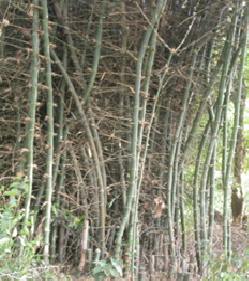We value your privacy
We use cookies to enhance your browsing experience, serve personalized ads or content, and analyze our traffic. By clicking "Accept All", you consent to our use of cookies.
We use cookies to help you navigate efficiently and perform certain functions. You will find detailed information about all cookies under each consent category below.
The cookies that are categorized as "Necessary" are stored on your browser as they are essential for enabling the basic functionalities of the site. ...
Necessary cookies are required to enable the basic features of this site, such as providing secure log-in or adjusting your consent preferences. These cookies do not store any personally identifiable data.
No cookies to display.
Functional cookies help perform certain functionalities like sharing the content of the website on social media platforms, collecting feedback, and other third-party features.
No cookies to display.
Analytical cookies are used to understand how visitors interact with the website. These cookies help provide information on metrics such as the number of visitors, bounce rate, traffic source, etc.
No cookies to display.
Performance cookies are used to understand and analyze the key performance indexes of the website which helps in delivering a better user experience for the visitors.
No cookies to display.
Advertisement cookies are used to provide visitors with customized advertisements based on the pages you visited previously and to analyze the effectiveness of the ad campaigns.
No cookies to display.
|
Division
|
Angiosperms |
|
Class
|
Monocotyledons |
|
Subclass
|
Glumiflorae |
|
Family Sub-family |
Poaceae Bambusoideae |
|
Genus |
Bambusa |
|
Species |
bambos |

|
Etymology:
|
Bambos or bambu, a latinised vernacular names |
|
Botanical name:
|
Bambusa bambos (L.) Voss. (B.arundinacea) (Retz.) Willd. |
|
Local/Trade names:
|
Spiny Bamboo, Thorny bamboo, Kanta bans |
|
Conservation status
|
Planted |
|
Description: |
A tall graceful, thorny bamboo with curved branches. Young shoots deep purple with few white stripes. The tip of growing shoots become blackish or yellowish with curled auricles, ciliated blades erect, tip blunt, glabrous. Culms strong, hollow, dull to deep green, 10-30 m tall, 2.7-10 cm in diameter at base; nodes comparatively larger in diameter than the internodes, sheath scar thick, uniform, remnants of sheath fibre present, in young culms a whitish or brownish band of pubescence above the nodes; supra nodal ring present, remnants of verticils of aerial root present on the supra nodal ridge up to 10th node; branch bud oval, 2-keeled, keels ciliate; internodes 15-30 cm long. |
|
Phenology |
Flowering gap is 44-49 years. |
|
Distribution |
Throughout India |
|
Where to see it |
Bambusetum |
|
Uses |
Its uses are for floating heavy timber and for structural purposes. Split culms are used for mat-making, basket works, etc. Young shoots are poisonous but picked or made into curries. Leaves and twigs are used as fodder and are largely consumed by elephants and cattle. |
Chief Conservator of Forests & Chief Wildlife Warden is the Head of the Department. There is one post of Conservator of Forests & two posts of Deputy Conservator of Forests viz.